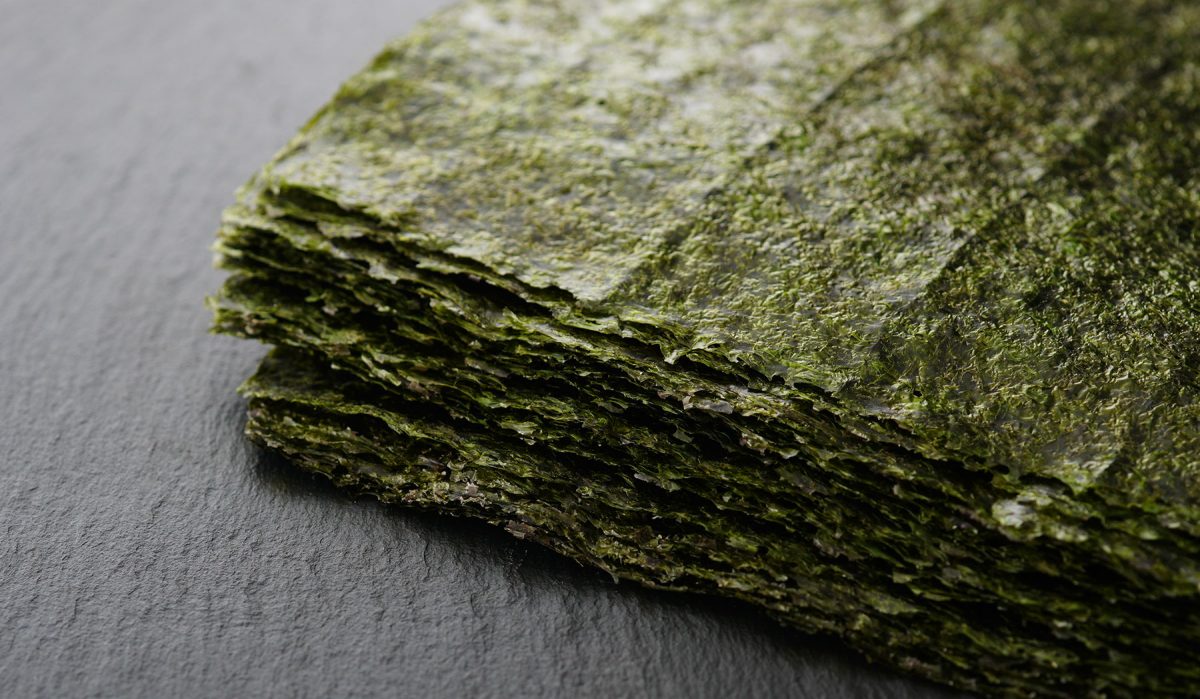Nori is a soft and dark brown algae, which has been dried on the same style of wooden frame used for paper. It is flattened and produced into paper thin sheets, most commonly used as the wrapping for maki sushi and onigiri, or snipped into strips and sprinkled on top of donburi and ochazuke.
It is highly nutritious, with vitamin A and glutamic acid (a type of amino acid), making it an important part of the daily diet in traditional Japanese cuisine.
Usually, nori sold at the store will have been toasted already (it usually says yakinori on the package). However, if you find that it is not as crisp as you desire, simply lay it flat on a grill or frying pan with no oil and toast it lightly. Make sure to flip it over before it burns! Wilted nori is very chewy and has rather an unpleasant texture, so serve your dish as soon as you’ve made it. You should also store your nori in an airtight container to prevent it from wilting. However, the package the nori is sold in usually has a seal, so it is not necessary to remove it to a different container.
If you find a plain bowl of steamed rice boring, try sprinkling some salt onto one side of a nori strip, or dipping it into soy sauce. Or, buy a package of ajinori. Ajinori is a flavoured nori, salty and slightly sweet.
